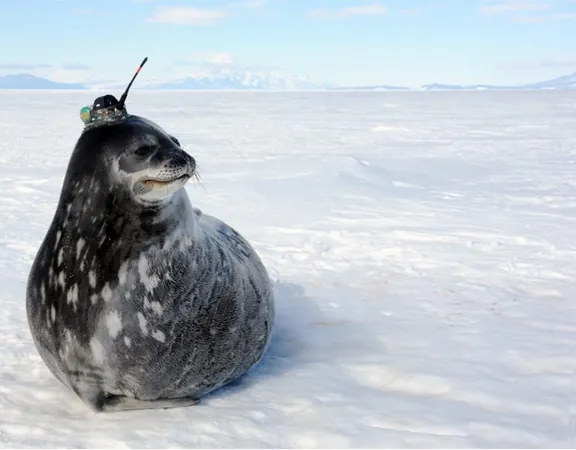
Shocking Discovery: Weddell Seals Avoid Intense Midday Dives for Ultimate Foraging Success!
2024-10-29
Author: Arjun
Shocking Discovery: Weddell Seals Avoid Intense Midday Dives for Ultimate Foraging Success!
Erebus Bay, Antarctica, is not just home to breathtaking landscapes; it's also where the remarkable Weddell seal resides—the southernmost mammal on Earth. Often mistaken for lazy giants lounging on the ice, these seals are actually extraordinary divers, capable of plunging to depths exceeding 900 meters (2,952 feet) and holding their breath for astonishing stretches of up to 96 minutes.
Recent groundbreaking research conducted by the Woods Hole Oceanographic Institution (WHOI) has revealed a sophisticated foraging strategy employed by Weddell seals. This new study, published in Communications Biology, showcases how these seals capitalize on the ever-changing seasonal light conditions in Antarctica.
Surprisingly, instead of diving deeply during peak midday hours when light levels are highest, the seals strategically time their most extreme dives for earlier in the day. According to lead author Michelle Shero, this method is pivotal because intense dives necessitate protracted recuperation periods once they surface. "While midday brings abundant prey visibility, the seals would forfeit the opportunity to hunt effectively if they’re recovering from extreme dives," she explained.
The seals are active foragers during the bright hours, yet they cleverly avoid the most taxing dives when prey is easy to spot. This intriguing behavior indicates a level of planning that was previously underestimated. Researchers outfitted 59 adult seals with advanced monitoring devices that tracked their dive behaviors over 8,913 seal days in the western Ross Sea, allowing for an in-depth analysis of their physiological trade-offs between oxygen conservation and energy expenditure.
These findings shine a light on the animals' strategic decision-making in their harsh environment, where daylight hours can stretch endlessly in summer or vanish completely in winter. Co-author Jennifer Burns highlighted how the seals not only adjusted dive depths and lengths based on light but also synchronized their recovery periods to optimize their hunting success.
Moreover, the researchers noted that during times of intense light, most marine animals—including the Weddell seals’ prey—tend to descend to greater depths to evade predators. Consequently, seals adopt shallower dives that allow them to maximize time spent foraging without risking lengthy recovery times.
The implications of this research extend beyond just Weddell seals. The observed behaviors may be relevant for other visual predators in varied marine environments, such as emperor penguins, during times of extreme light fluctuation.
As co-author Daniel Costa pointed out, Weddell seals are adept at navigating one of the planet's most unforgiving habitats, requiring them to maintain their internal clocks efficiently, whether under ceaseless sunlight or complete darkness. Their remarkable adaptations not only allow them to thrive but also hold valuable lessons for understanding predator-prey dynamics in light-variable ecosystems across the globe.
In a world where nature continually surprises us, the Weddell seals remind us that intelligence in the wild is as crucial as physical prowess. What else might they be hiding in their fascinating depths? Stay tuned for more revelations from the icy realms of Antarctica!




 Brasil (PT)
Brasil (PT)
 Canada (EN)
Canada (EN)
 Chile (ES)
Chile (ES)
 España (ES)
España (ES)
 France (FR)
France (FR)
 Hong Kong (EN)
Hong Kong (EN)
 Italia (IT)
Italia (IT)
 日本 (JA)
日本 (JA)
 Magyarország (HU)
Magyarország (HU)
 Norge (NO)
Norge (NO)
 Polska (PL)
Polska (PL)
 Schweiz (DE)
Schweiz (DE)
 Singapore (EN)
Singapore (EN)
 Sverige (SV)
Sverige (SV)
 Suomi (FI)
Suomi (FI)
 Türkiye (TR)
Türkiye (TR)